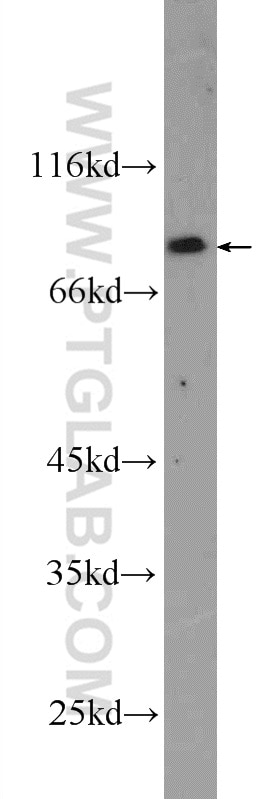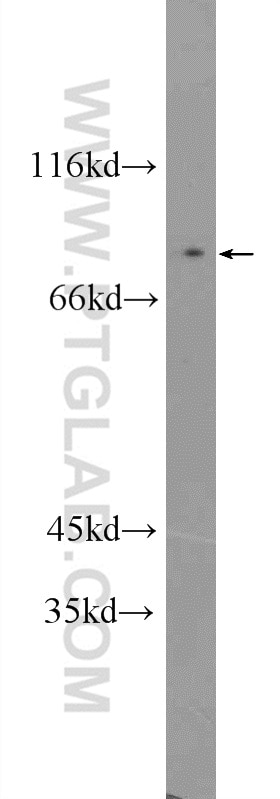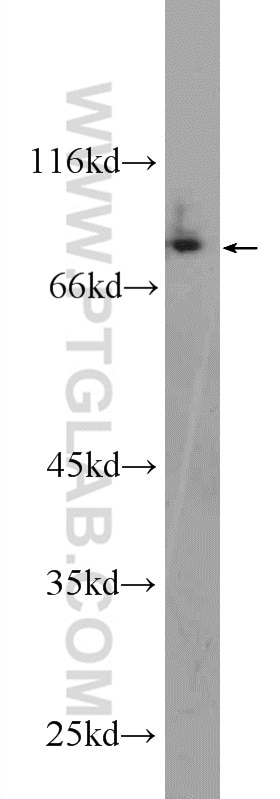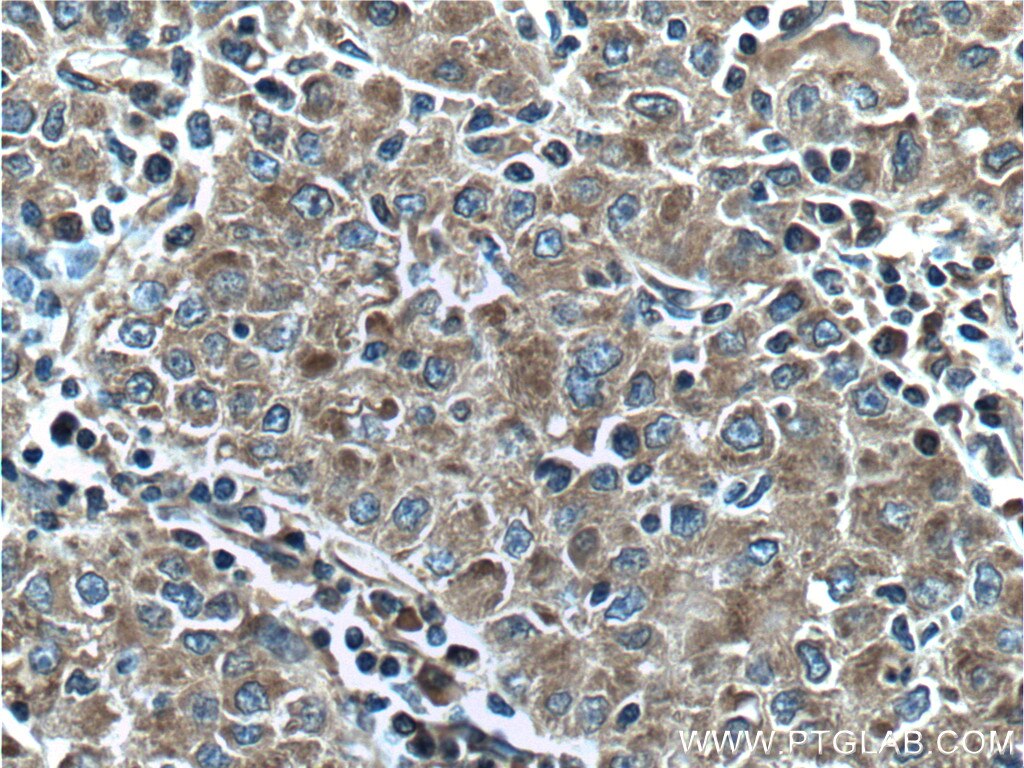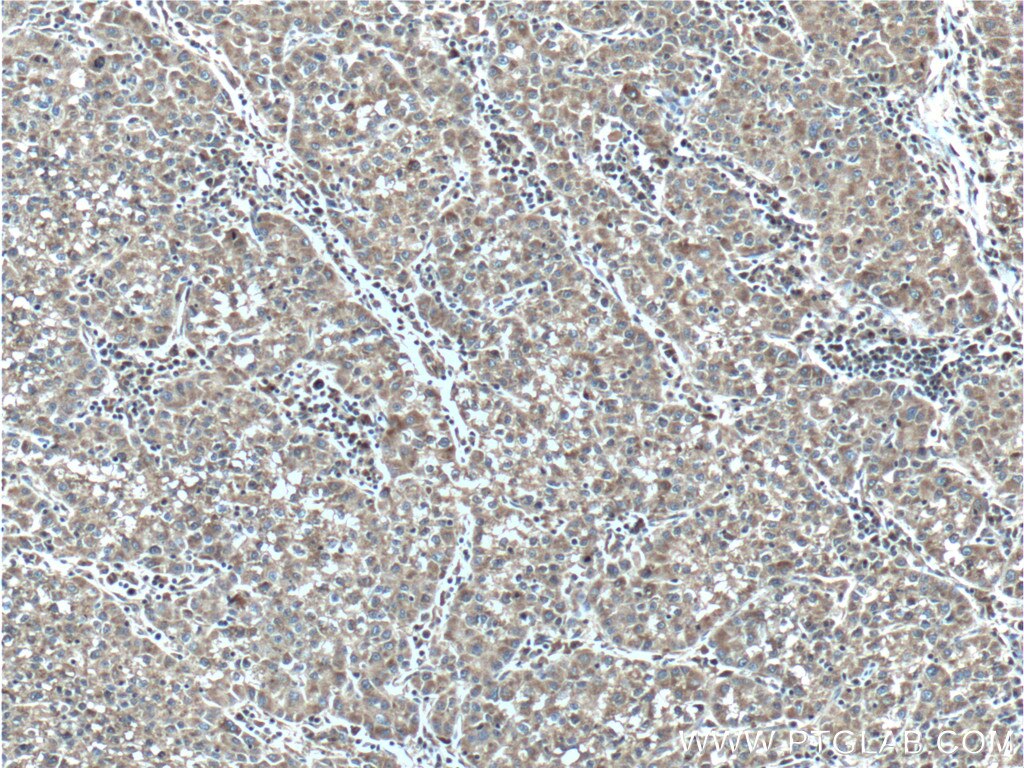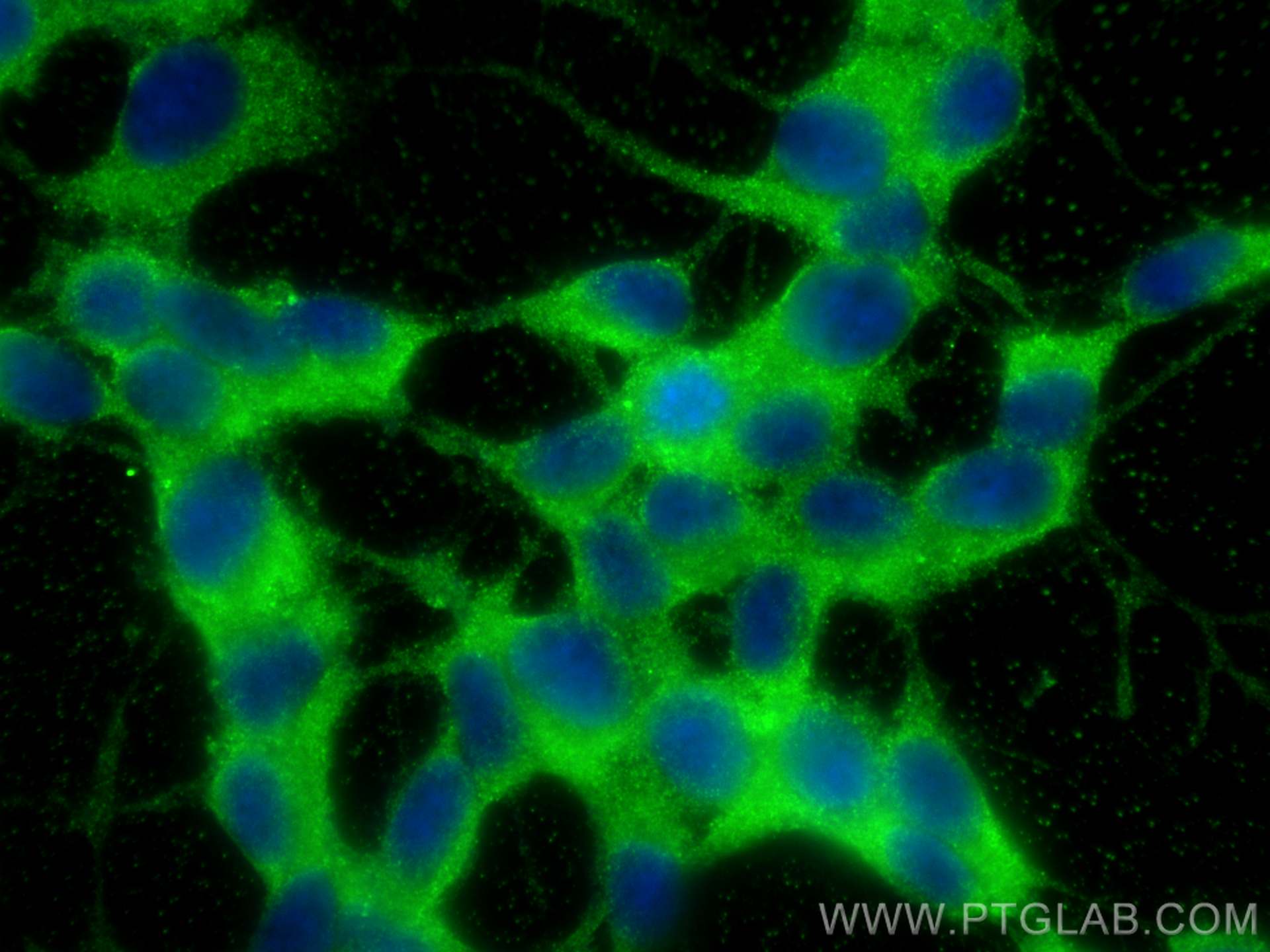Anticorps Polyclonal de lapin anti-CPEB4
CPEB4 Polyclonal Antibody for WB, IHC, IF/ICC, ELISA
Hôte / Isotype
Lapin / IgG
Réactivité testée
Humain, rat, souris
Applications
WB, IHC, IF/ICC, RIP, ELISA
Conjugaison
Non conjugué
N° de cat : 25342-1-AP
Synonymes
Galerie de données de validation
Applications testées
| Résultats positifs en WB | cellules SH-SY5Y, cellules A375, cellules HeLa |
| Résultats positifs en IHC | tissu de cancer du foie humain il est suggéré de démasquer l'antigène avec un tampon de TE buffer pH 9.0; (*) À défaut, 'le démasquage de l'antigène peut être 'effectué avec un tampon citrate pH 6,0. |
| Résultats positifs en IF/ICC | cellules SH-SY5Y, |
Dilution recommandée
| Application | Dilution |
|---|---|
| Western Blot (WB) | WB : 1:500-1:1000 |
| Immunohistochimie (IHC) | IHC : 1:50-1:500 |
| Immunofluorescence (IF)/ICC | IF/ICC : 1:200-1:800 |
| It is recommended that this reagent should be titrated in each testing system to obtain optimal results. | |
| Sample-dependent, check data in validation data gallery | |
Applications publiées
| WB | See 10 publications below |
| IHC | See 2 publications below |
| RIP | See 1 publications below |
Informations sur le produit
25342-1-AP cible CPEB4 dans les applications de WB, IHC, IF/ICC, RIP, ELISA et montre une réactivité avec des échantillons Humain, rat, souris
| Réactivité | Humain, rat, souris |
| Réactivité citée | Humain, souris |
| Hôte / Isotype | Lapin / IgG |
| Clonalité | Polyclonal |
| Type | Anticorps |
| Immunogène | Peptide |
| Nom complet | cytoplasmic polyadenylation element binding protein 4 |
| Masse moléculaire calculée | 80 kDa |
| Poids moléculaire observé | 80 kDa |
| Numéro d’acquisition GenBank | NM_030627 |
| Symbole du gène | CPEB4 |
| Identification du gène (NCBI) | 80315 |
| Conjugaison | Non conjugué |
| Forme | Liquide |
| Méthode de purification | Purification par affinité contre l'antigène |
| Tampon de stockage | PBS with 0.02% sodium azide and 50% glycerol |
| Conditions de stockage | Stocker à -20°C. Stable pendant un an après l'expédition. L'aliquotage n'est pas nécessaire pour le stockage à -20oC Les 20ul contiennent 0,1% de BSA. |
Informations générales
CPEB4 also named as CPE binding protein 4 or hCPEB 4 is a 729 amino acid protein, which contains two RRM domains and belongs to the RRM CPEB family. CPEB4 involves in some forms of synaptic plasticity and regulate translation by binding to regulatory motifs of defined mRNA targets. CPEB1 and CPEB4 are differentially regulated by phase-specific kinases, generating the need of two sequential CPEB activities to sustain cytoplasmic polyadenylation during all the meiotic phases.
Protocole
| Product Specific Protocols | |
|---|---|
| WB protocol for CPEB4 antibody 25342-1-AP | Download protocol |
| IHC protocol for CPEB4 antibody 25342-1-AP | Download protocol |
| IF protocol for CPEB4 antibody 25342-1-AP | Download protocol |
| Standard Protocols | |
|---|---|
| Click here to view our Standard Protocols |
Publications
| Species | Application | Title |
|---|---|---|
Nat Commun Defining the RBPome of primary T helper cells to elucidate higher-order Roquin-mediated mRNA regulation. | ||
Front Cell Dev Biol CPEB4 Inhibit Cell Proliferation via Upregulating p21 mRNA Stability in Renal Cell Carcinoma. | ||
J Transl Med CircESRP1 enhances metastasis and epithelial-mesenchymal transition in endometrial cancer via the miR-874-3p/CPEB4 axis. | ||
Technol Cancer Res Treat miRNA-130a-3p/CPEB4 Axis Modulates Glioblastoma Growth and Progression | ||
Acta Cir Bras Gynura segetum induces hepatic sinusoidal obstruction syndrome in mice by impairing autophagy. | ||
bioRxiv Inhibition of CPEB3 ribozyme elevates CPEB3 protein expression and polyadenylation of its target mRNAs, and enhances object location memory |
